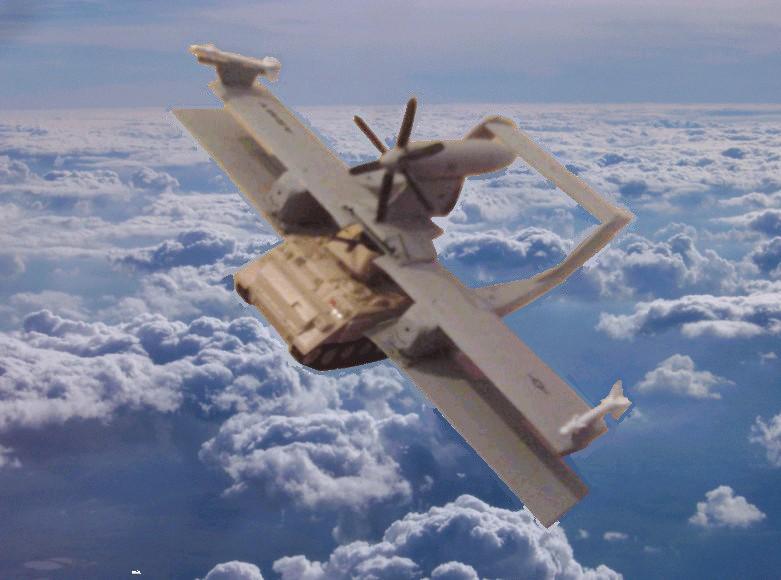
Tanks that Fly II: AeroGavins

 youtube.com/watch?v=SwHqLtK_TpY
youtube.com/watch?v=SwHqLtK_TpY
Air Force-Owned Transports
One of the bureaucratic and cultural problems standing in the way of progress towards airmechanized, 3D maneuver warfare is having to get a group of outsiders to fly the mechanized force--even if its very light and interfaces easily with the delivery aircraft. The Germans in WW2 instilled air/ground teamwork by making their Army paratroopers a part of their Air Force (Luftwaffe). However, by the time their aircraft payloads had been improved to where they could air-mech light tanks with the Me321 glider and powered version Me323 Gigant STOL transport, they were on the strategic defensive. In contrast, the Allies kept their Army Paratroopers separate from their Air Forces which kept a bureaucratic schism that cost us men's lives: en route to Sicily 37 x C-47 transport planes were shot down by jittery Navy gunners below and cost us battles--Arnhem where the Airborne couldn't convince the transport planes to deliver them where they wanted to be or enough of them to prevail. Today, separate Air Force bureaucracies want to operate like pampered airlines with routine schedules flying from airfield runway to airfield runway and not get shot at or too dirty in the process. What gets lost in this is fixed-wing aircraft payload efficiency required to strategically, operationally or tactically maneuver even the light (under 20 tons) tanks of an air-mech defacto cavalry force.
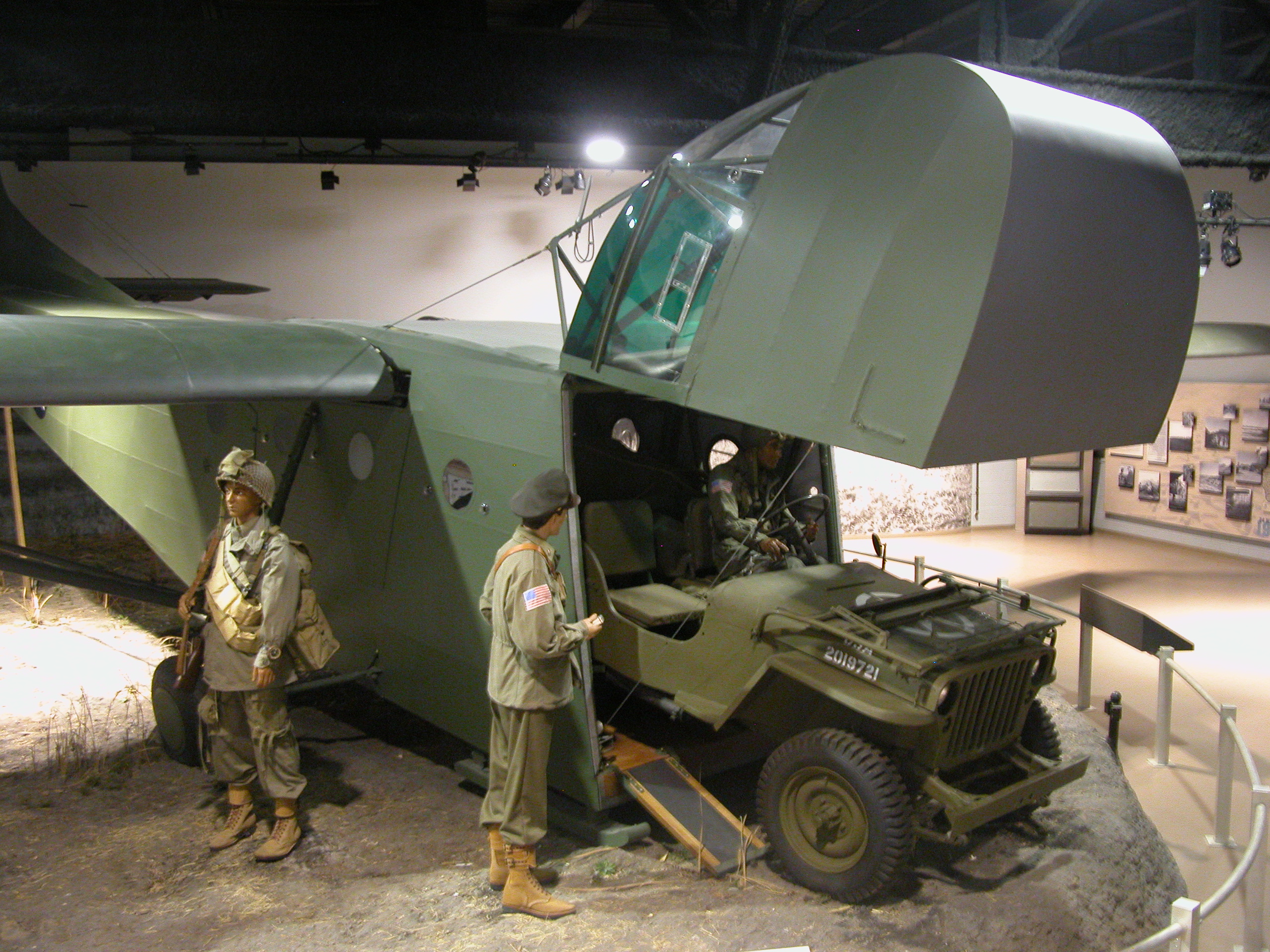
In WW2 to get the necessary crash-landing, one-way of vital supplies to spots where there was no runway/airfield, fixed-wing gliders were towed by [army] air force transport planes and then cut loose to be landed by ARMY pilots. The ARMY owned and operated the gliders and this is a critical distinction: they didn't mind if they got destroyed in the process of airlanding so this facilitated an aggressive use of where they were delivered that an air force bureaucracy with powered planes even STOL ones would simply not go. The British 6th Airborne Division used giant Hamilcar gliders on D-Day and the Rhine river crossings to deliver light tanks with great effect and won important battles with them. The British 1st Airborne Division refused to repeat light tank delivery at Arnhem and lost the battle. The American Airborne didn't even try to deliver light tanks and suffered heavy casualties in all operations throughout the war.
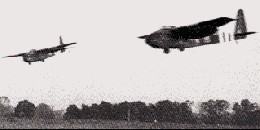

At WW2's end the British, Americans and even the Germans had realized a peculiar fact: that if a glider were towed into the air by a transport plane, but carried its own low powerplant propulsion means, it could fly itself all the way to the target and crash-land, eliminating the whole complexity and dangers associated with unpowered gliders having to be towed all-the-way-to-the-target. The CG-20 heavy payload glider morphed into various powered forms until it became the STOL C-123 owned and operated by the USAF reluctantly--and lost in the process was the land anywhere-with-payloads capabilities of gliders.
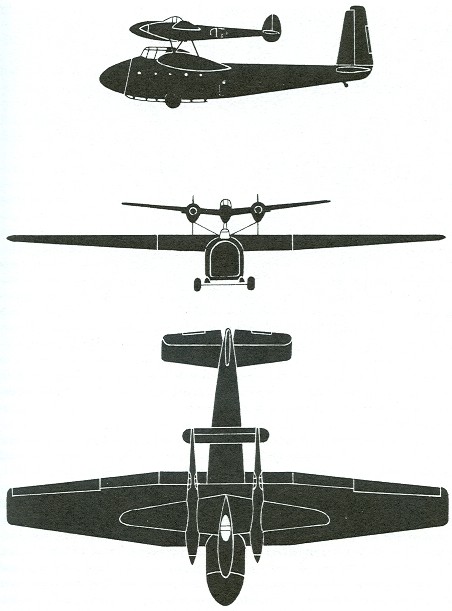
The British even came up with the glider being towed aloft and then powered by a P-38 fighter--once detached they'd then have a fighter to strafe the landing area and/or shoot down any enemy planes. Its still a great idea we could use today by employing the A-10 Warthog to power a flying wing holding an ISO shipping container "BATTLEBOX" that could have a Mini-Gavin inside.

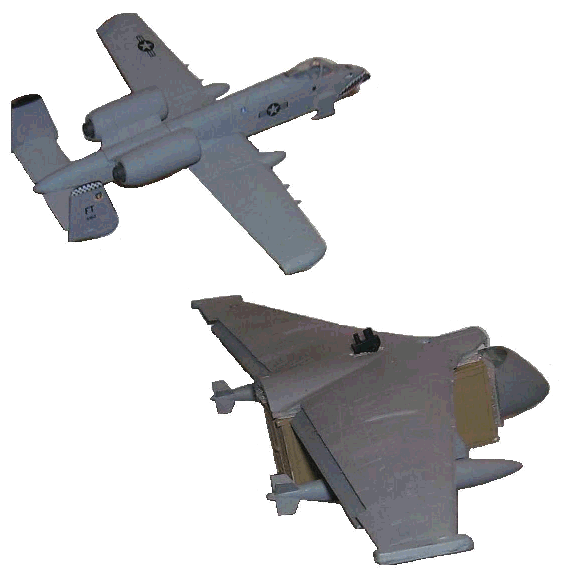
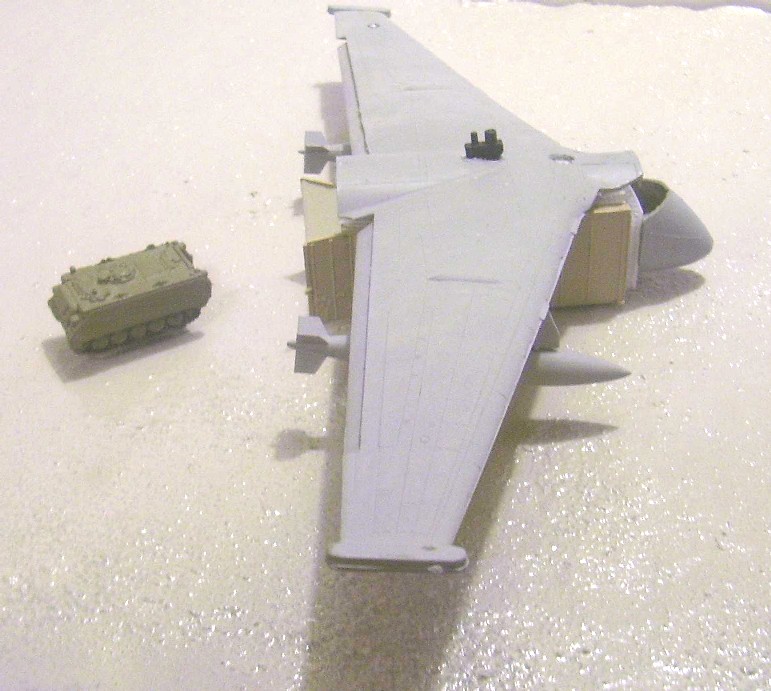
BATTLEBOXattackgliderTM
Why did the U.S. Army Airborne in 1949 give up on gliders just when they were about to be perfected?
Because the glider-riders and pilots were yet another "THEM" compared to the parachute delivered "US" and disliked and seen as a threat--instead of a valued help. In narcissistic snobbery, the paratroopers looked down on the glider Soldiers as "pussies" because they didn't jump with their bodies--but sat their asses on seats and rode gliders to land. So there was no powerful glider bureaucracy within the Army to fight for the capability--so it was lost. The paratrooper's self-serving argument was EVERYTHING would parachute drop---which is true its possible--but this made them even more dependant upon a separate Air Force bureaucracy to fly them and drop them. The result of this can be seen today in Iraq/Afghanistan where we should be dropping paratroopers and light tanks all over the place like the Rhodesian Fire Forces to subdue sub-national conflict rebels but don't because of the difficulties associated with getting the USAF to play and after the drop collecting parachutes. Don't get me wrong, we should already be doing this.
Army-Owned Transports
A step towards the right direction was made when the Army guaranteed its own powered transports via the its-different, rotary-wing helicopter initiative in the 1950s. The self-centered USAF bureaucracy tolerated the Army getting helicopters because they are expensive, fragile and even though they can land VTOL into and out of pin-pointed areas, they can't deliver much combat power (until of late) with them. My point of contention is you still have a fragile, powered aircraft airlanding slowly into a danger area that if it crashes and burns the enemy scores a powerful victory. With helicopters we have created an Army risk-averse bureaucracy that the air-mech unit still has to "mother may I?" to get them to fly you anywhere. Even when the Army gets its own C-27J Spartan fixed-wing STOL & airdrop transport planes, the bureaucratic obstacle of asking outsiders "for a lift" will remain to be overcome.
No Airfields = No Transport Planes
Now that we understand the self-inflicted reasons why we have insufficient air/ground 3D maneuver synergism we must face the most ominous problem: an enemy increasingly able to locate, hit and destroy our air bases and wipe-out our entire Air Force on the ground. A combination of pilot ego and laziness that wants comfortable facilities to live at and corporate greed have merged into a "death spiral" of overly complex, large, costly, sexy planes that we can only afford handfuls that will be vulnerably parked in the open on large, easily detected and attacked air bases. Now we can and should disperse our air forces into camouflaged and underground "BATTLEBOXes" using folding wing and quick-launch technologies to evade enemy precision strike destruction. However, hiding large transports like the C-5s, C-17s, C-130s and C-27Js will be difficult to impossible--which means they will not be available to fly the Army anywhere after the one-time strategic air delivery from CONUS to the theater of operations. And don't get too smug about the Army's large helicopters being much better at being protected from enemy air base destruction.
The Navy with its bloated supercarriers and amphibious surface ships (floating air bases) are also not likely to survive, either--with no ability to use the water for protection. At least the AF can burrow and hide easily under the ground if they made the effort to reform itself.
No airbases = No aircraft. No aircraft = No air cover. No air cover = No American military victory at best, at worst--Guadalcanal without a happy ending.
There has to be a better way.
There is.
Make tanks fly.
Walter Christie was Right All Along
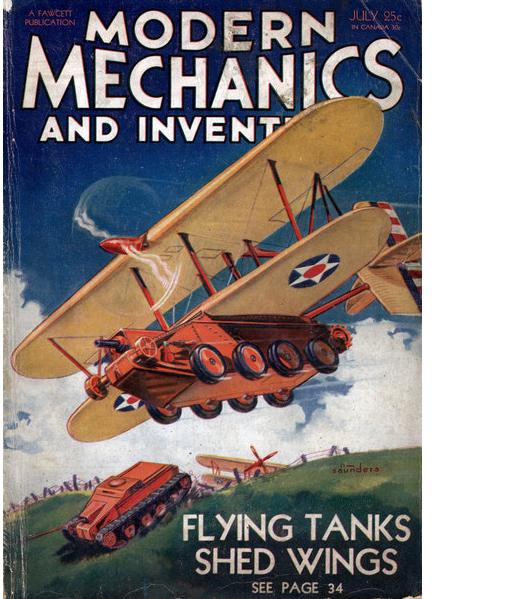
http://blog.modernmechanix.com/flying-tanks-that-shed-their-wings/
Flying Tanks that Shed Their Wings (Popular Mechanics July, 1932)By Lew Hold
Imagine those two formidable weapons of modern warfare, the airplane and the armored tank, combined into one terrible machine of destruction! Fantastic as the idea sounds, it is fast taking physical shape as a reality for Uncle Sam's army. The whole amazing story is presented to you in this important article.
IS WAR, already made terrible to contemplate by the invention of too-efficient methods of destruction, on the verge of being banished forever by an amazing new weapon so horrible in its possibilities that nations of the world will not dare to risk its fury?
This is the idea conjured up by J. Walter Christie, noted builder of tanks for the U. S. Army, who has been secretly working on the most revolutionary war invention since the discovery of gunpowderâ€"an armored tank which flies as swiftly as a bombing plane, and which, by simply shedding its wings when on the ground, can travel over any terrain with guns blazing at speeds of 70 miles an hour!
Changes Modern War Strategy
The entire strategy of modern warfare will have to be altered when Mr. Christie's (lying tank is proved practical. Trench warfare, which played such an important part in the World War, will be well-nigh impossible, for with a swarm of a hundred flying tanks descending into No-Man's Land, no infantry in the world could resist the withering fire.
Nor is the flying tank so grotesque an idea as might appear at first glance. During the late war no one even conceived the possibility of an armored tank's being propelled through the skies on wings like an airplane, driven by an airplane motor.
Flying Tank Now Being Built
Yet Mr. Christie's tank, he promises, will do precisely that. Because of his success in building speed tanks for the army and his extensive knowledge of this phase of warfare, there can be no doubt that he knows just what he is doing. He is not a man given to exaggeration, and the fact that the tank is now taking shape in the plant of the United States Wheel Track Layer Corp., at Linden, N. J., proves that the idea has advanced beyond the paper and plan stage.
In the words of the inventor, "The flying tank is a machine to end war. Knowledge of its existence and possession will be a greater guarantee of peace than all the treaties that human ingenuity can concoct. A flock of flying tanks set loose on an enemy and any war is brought to an abrupt finish."
Details of the tank's construction are astonishing. The flying fortress will be armed with a 75 millimeter gun, with supplementary small machine guns. Personnel will consist of two men. The body of the flying tank is amazingly light because of new principles of construction closely guarded by the inventor. In fact, the finished product, ready for military duty, will not weigh over four tons.
Its lightweight engine can develop 1000 horsepower, and by an ingenious system of gearing the motor drives both the back axle, for propelling the tank on the ground, and the propeller for flying duty.
Take-off Problem Solved
Eight large wheels are provided on the tank, with twin pneumatic tires over which the caterpillar tread fits. With the special springing equipment, pneumatic tires and patented caterpillar track, Mr. Christie's tank can make 70 miles an hour across rough country, it has been calculated, and as much as 100 miles an hour on a smooth surface. Its speed makes it a difficult target for enemy fire.
"It is an established fact that a single pair of wings can support this tank in the air," Mr. Christie explained to the special representative of Modern Mechanics and Inventions. "Any aviator can tell you in two minutes the exact wing spread required."
"The most serious difficulty seems to be the take-off. Several of my flying friends have told me that many army planes require three-quarters of a mile of prepared ground for a runway and they insisted that my machine would need a still greater starting space. There were also those who doubted that my tank would even leave the ground."
"After three years of experimentation, I was prepared to meet their queries and their doubts. This is the solution: My machine will work up to a flying speed while it is still on the ground. At a hundred yards the tank will be going fast enough to rise the moment the power is transferred from the wheels to the propeller, no matter on what kind of surface the tank is traveling."
"The caterpillars will function on any condition of base. The Christie speed tank which has been already acquired by the United States government bears testimony to that advantage."
Treads Simplify Landing Problem
"The other hazardous stumbling-block, the landing of the flying tank, has also been overcome. My machine can alight on very limited space. The pilot can observe his air speed by means of his instrument board. When he switches from being a pilot to being a chauffeur he will know his land speed, both on the caterpillar tracks and on wheels, whichever he may choose to bring into use."
"All that the man at the controls has to do is to start the wheels of the caterpillar in motion and adjust them to the air speed. This is done merely by keeping an eye on the speedometers. As soon as the tank touches the ground, he brakes it as he would an auto truck. If he wants to liberate the tank from the wings, he has only to press a lever and that operation is completed in a jiffy. Then if he wants to, he can proceed along a highway on the rubber-tired wheels at a rate of 100 miles an hour."
That is how Mr. Christie's latest invention will work. But he has already begun to plan for a further improvement on this device. He will soon begin work on a detachable airplane as applied to the armored tank. The plane will deposit the tank at a desired post and then return to bring up others, or engage in other maneuvers.
In connection with these latest experiments, a valuable peacetime use of the flying tank principle suggests itself.
One of the several problems confronting passenger air lines today and, from the passengers' standpoint, certainly the most annoying, is the business of getting passengers to and from the airportâ€"the actual point of arrival and departure of the airplane itself.
Airports are perforce located at a considerable distance from the downtown district of a city and it naturally follows that the larger the city the more inaccessible will be the airport or air terminal. In the minds of prospective air passengers the immediate accessibility of bus and railroad facilities contrast pleasantly with the annoyance attendant on purchasing a ticket, riding out to a field, transferring to a plane and repeating the performance at the flight destination.
The time-saving feature, most practical appeal of air travel, is thus not so much in evidence or even may be totally absent in flights of less than 300 miles.
Bringing Airports Close to Town
Several remedies for the situation are feasible. One, and the most frequently heard of, is to build airports in the heart of a city, by utilizing the tops of large buildings with or without the aid of catapult launching devices, by spanning whole blocks of streets with wide bridge-like structures or spanning convenient rivers in a similar manner. All these ideas have been mentioned at different times. All of them suffer from one common disadvantage.
To bring an air terminal into the heart of a city would not only result in air traffic at an altitude we are obliged to regard as unsafe, but would further imply taking off and landing over these crowded centers. The airplane of today is hardly suited to operating under the conditions just outlined and therefore this otherwise attractive solution of the problem must, for the time being at any rate, be abandoned as a serious consideration.
Another course is open and fantastic as it may appear at first glance the idea has been approached a number of times and there are no serious difficulties in the way. The idea involves the building of passenger planes in two distinct and self-contained units. One, the airplane portion, would contain all the essentials for flight and consist of wings, tail surfaces, motors, pilot's control room and the landing gear.
The passenger cabin complete would form a second separate unit. Capable of being attached or detached automatically from the airplane unit, this cabin would have the appearance of a large bus or Pullman car and would be capable of independent operation on the ground by means of a light motor driving wheels which would be drawn up when cabin and plane formed a single flying unit.
Such a combination would enable passengers to enter the cabin at a central depot in the city itself, travel out to the field (in extremely large cities where the passenger traffic justified the expense, on special roads) and there be instantaneously attached to the airplane portion of the combination to proceed by air to its destination.
Leaving our baggage at the checking counter, we then repair to the excellent restaurant to obtain a light meal and pass the time until our plane time arrives. As the time approaches for the plane-car to leave we retrieve our baggage and pass through the door to platform No. 5, to see immediately before us a smooth metal buslike car into which passengers are now pouring. A capable attendant relieves us of our baggage and we enter the car and pass along the central corridor to the small but comfortable observation room in the rear.
Glancing through the windows which surround this compartment, we notice numbers of other plane-cars. Some are standing at their respective platforms, others are arriving or departing through the low doorless exits of the vast hall. At 5:15 to the dot our car glides smoothly forward and we pass out of the hall onto a wide high-speed road which leads directly to the flying field.
Travelling at an even sixty, we arrive at the field to see a number of curious looking planes lined up before the service hangars. They appear to be all wings and tail and are lined up over sets of trough-like tracks which serve to guide the wheels of the cars into exact position as they arrive to be hooked up to the plane units. Into one of these sets of tracks our car wheels presently glide, the car stops and the ground crew busies itself locking the connections into place.
A few moments pause and then the motors of the plane, which have been idling as we approach, burst into a mighty roar and in what seems to have been but a few minutes since we entered the car at the central depot we are sailing high over the city on our way to Minneapolis.
Descending at the Wold-Chamberlin airport at Minneapolis our wheels have scarcely touched the ground and the plane approached the concrete apron before the landing gear is retracted, the car wheels extended and the release gear operated to allow our. car to shoot forward on the ground once again under its own power while the airplane unit is run into the service sheds to await the car's return with a fresh load of passengers for the return flight. Minneapolis air traffic being insufficient to justify the expense of a special speed road we proceed along the ordinary highways and city streets to the loop district and pull up inside the central depot to leave our car exactly three hours from the time we entered it in the Chicago central depot.
A flight of fancy? Perhaps. But not beyond the bounds of possibility. Until such time as planes are capable of arrested flight or are so dependable that they may be operated from the heart of a great city without undue risk to either passengers or inhabitants, this may well prove to be the most satisfactory solution of the airport problem. It is true that the necessity of taking passengers to the field has not been eliminated but the inconvenience element has been totally done away with and furthermore, in the case of large cities where the volume and radius of travel warrants the expense, high speed airport roads will permit the cars being shuttled back and forth at speeds quite impossible under present conditions.
A modification of the detachable car unit described in this article would lend itself admirably to freight purposes. In this case the freight cabin or car need not be equipped with motor or ground wheels but could be detached directly onto skeleton trucks or trailers for distribution at the terminal airports.
Still another application of the idea would be of inestimable value to sport planes. Arrived at a field the owner-pilot could detach and park the airplane unit and proceed in what would then become a lightweight closed car to his city destination. The car in this instance would in all probability resemble the little three-wheeled "tear-drop" car illustrated in the April issue of Modern Mechanics and Inventions.
While Colonel Edward Swinton and Winston Churchill rightfully are credited with inventing, the tracked, armored "tank" in WW1, it was Walter Christie who created the modern tank with robust suspension capable of moving at will all over the battlefield for hundreds upon hundreds of miles. Rejected by Army ordnance and the cheapskate depression-era U.S. Congress, Christie took his technology to the Soviet communists who culminated it into the T34 medium tank--arguably the best tank of the war. This part of tank history even the "whoppertanktard mech pussies" will admit is true. The whole truth is that the U.S. Army could have had Christie flying tanks and heavier well-sloped turretless STUG or turreted T34-type Christie tanks in WW2; saving thousands of lives and winning the war sooner. The rest of this truth they will probably demur on because psychologically the men who gravitate to mechanized warfare are introverted and lack the raw courage to risk their bodies as the extroverted--but narcissistic and unwilling to combine arms--light infantry paratroops will do to 3D maneuver into war and battle-winning decisive situations. The basic idea of the mounted trooper is he wants to be in the armored box so he doesn't get killed or maimed by enemy fire. However, this common sense desire must not be allowed to be the whole mentality driving force structure and operations--lest there will be no fighting spirit to take-the-fight-to-the-enemy-and-win which requires taking risks. Sadly, today's Army heavy brigades are dominated by this cowardice that battle will not be joined unless in an invincible medium-to-heavy tank--which resultantly restricts HBCT usefulness to just open areas for 2D maneuvers. Find some closed terrain, and the LINNIEs walk in and claim they must foot-slog and illogically road truck hop all over the place as we see absurdly in Afghanistan. If you are a "tanker" and you insist you are not a pussy (coward), then STFU and stop resisting the use of lighter tanks for a cavalry--that are required even if not 3D air-maneuvered--just to traverse closed terrains where low ground pressures are required so we can even have effective 2D maneuver. Without a cavalry making first contact with the enemy ahead and developing situations on our terms, the main body slams into every problem and gets tangled up. Study the 3rd ID (M) "thunder run" into Baghdad and note their avoidable losses. Had they owned an actual light tank cavalry--and not BS Humvee truck units that are fatally unsound if sent to make any contact with the enemy these loses in vehicles and men would not have happened. The Light Infantry BCTs do not want to look like the HBCTs so they automatically rejected tracked tanks--even light ones--out of their snobbery and narcissism resulting in America not having a cavalry as LTG Gavin lamented back in 1954 upon the aftermath of the Korean war.
You can see the trend here; whenever you separate a function to a bureaucracy you lose that function when you need it.
Example: transport aircraft owned by the Air Force.
Conversely, if you keep a function within a large bureaucracy and have it compete for resources and use in plans it will be ignored in favor of whatever the main body groupthink finds sexier.
Example: Cavalry in the U.S. Army.
U.S. Armor: Cavalry 1917-1967
 scribd.com/doc/103346230/1973-U-S-Armor-Cavalry-A-Short-History-1917-1967
scribd.com/doc/103346230/1973-U-S-Armor-Cavalry-A-Short-History-1917-1967
(1973) U.S. Armor-Cavalry: A Short History 1917-1967 by Inveteratus
Christie saw this and figured out the solution--as did the early Russian Airborne VDV pioneers: make tanks fly.
Then, the owners and operators are united at the platform level. The challenge then is to not compromise the platform's function if tasked with its delivery task as seen in the overly large and complex high-water speed AAAV/EFV that is damning the USMC. By making the air delivery means for tanks detach--be it parachutes and platforms or wings and power units--doesn't degrade the former's function upon landing. More on this later. First a look at what being resourceful really means.
Airborne Warfare: Paratroopers Get the Equipment they Need to Win; Not Just Do Without

One of the BS narcissistic crap that comes from today's egomaniac Paratroopers living off the WW2 legacy of our pioneers like LTG James Gavin is their perversion of the former's teachings and life's works. One of them is this taking LTG Gavin out-of-context to try to foist off this BS that Paratroopers don't have to worry about equipment--all they need is their big egos and physical fitness. These LINNIEs will cite the picture above that LTG Gavin had posted in his office of a Paratrooper in combat during WW2.
If you take what the LINNIEs are saying at face value--which is what they want--why does the Paratrooper need ANY equipment? Why doesn't he just attack the Germans naked? After all, all that matters is mental attitude and physical fitness, right?
Oh, wait a minute!
Look what he's carrying. He's got a Thompson Sub-Machine Gun (SMG). Looks like a .45 caliber automatic pistol (ACP), too. Where did they come from? Did the Paratrooper create these by doing push-ups?
No, THEY WERE MADE BEFOREHAND IN A FACTORY after much THOUGHT and experimentation by equipment designers and engineers. Not Paratrooper dumbass and push-ups. Someone with brains created them. And without them, the Paratroopers wouldn't have taken squat in WW2--or any other time--because the whole creation of a Paratrooper requires aircraft, parachutes--and tanks---which are built by GIDO--Get It and Drive On--Airborne leaders working with designers and engineers (industry). Paratrooper resourcefulness is more than just FIDO (Fuck It, Drive On) by making do with what you have got or can find on the battlefield as somewhat expressed in the famous picture above. It means GIDO BEFORE THE WAR TO GET THE BEST FORCE STRUCTURE AND EQUIPMENT. Kind of like EXACTLY what LTG Gavin said in his BOOKS Airborne Warfare (1947) and War and Peace in the Space Age (1958).
So this LINNIE FIDO BS that the bad WW2 re-enactors blab about today to try to excuse away their Luddite hand weapons-only laziness that stands in the way of Airborne warfare progress today is in violation of the true Airborne spirit as defined by Mr. Airborne himself, LTG James Gavin. In his books, he called for detachable KIWI pods that fight and air-deliverable light tanks THAT WOULD BE OWNED AND OPERATED BY THE PARATROOPER. Making the tank itself fly and not need to be in or be the KIWI pod that requires an USAF transport plane would be the epitome of the U.S. Airborne Spirit of "LOGOPs" because it would empower the little group of Paratroopers to have its own armored, air, amphibious and x-country mobility (XCM), firepower and vital supplies all in one package under their ownership and control. It'd be the first step towards Robert Heinlein's Starship Troopers mobile infantry that could fly.
What is a Tank? What is a Flying Tank?
Essentially, what a tank does with its body is condenses itself into a very thick form or shell so it can withstand enemy attacks. Its tracks enable it to go cross-country and even over enemy obstacles of wire and trenches etc. This makes the tank's mass gravitate towards the earth--which makes it hard for airplanes to take them into the air by air pressure differential using wings. A wing cuts through the air and the curved shape on top makes the air on top move faster than the air on bottom so it lingers for a shorter time on top so its otherwise 14.7 PSI weight is reduced creating an imbalance so the wing lifts. This is induced lift. A fixed-wing plane needs thrust to move forward to get air flowing over its wings to make induced lift and then when it rotates its nose the wing gets dynamic lift from the air hitting the underside of the wing causing action-reaction. A rotary-wing eliminates a long run by rotating its wings to slice through the air to induce lift but so far is limited once in flight to no more than 300 mph due to retreating blade stall.
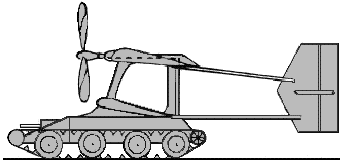
Therefore, making a tank fly is simply a matter of mathematics; provide enough lift either by fixed or rotary wings. Ever the clever minimalist, Christie realized in the 1930s that if you supplied his light tank with bi-plane wings (two sets of wings) you would only need to tap into the same power plant that powered the tank on the ground and route it to a propeller to move through the air. So far my research doesn't indicate exactly why he never (I ass u me) got his M1932 flying tank into the air when there is photographic evidence that he was building an actual prototype.
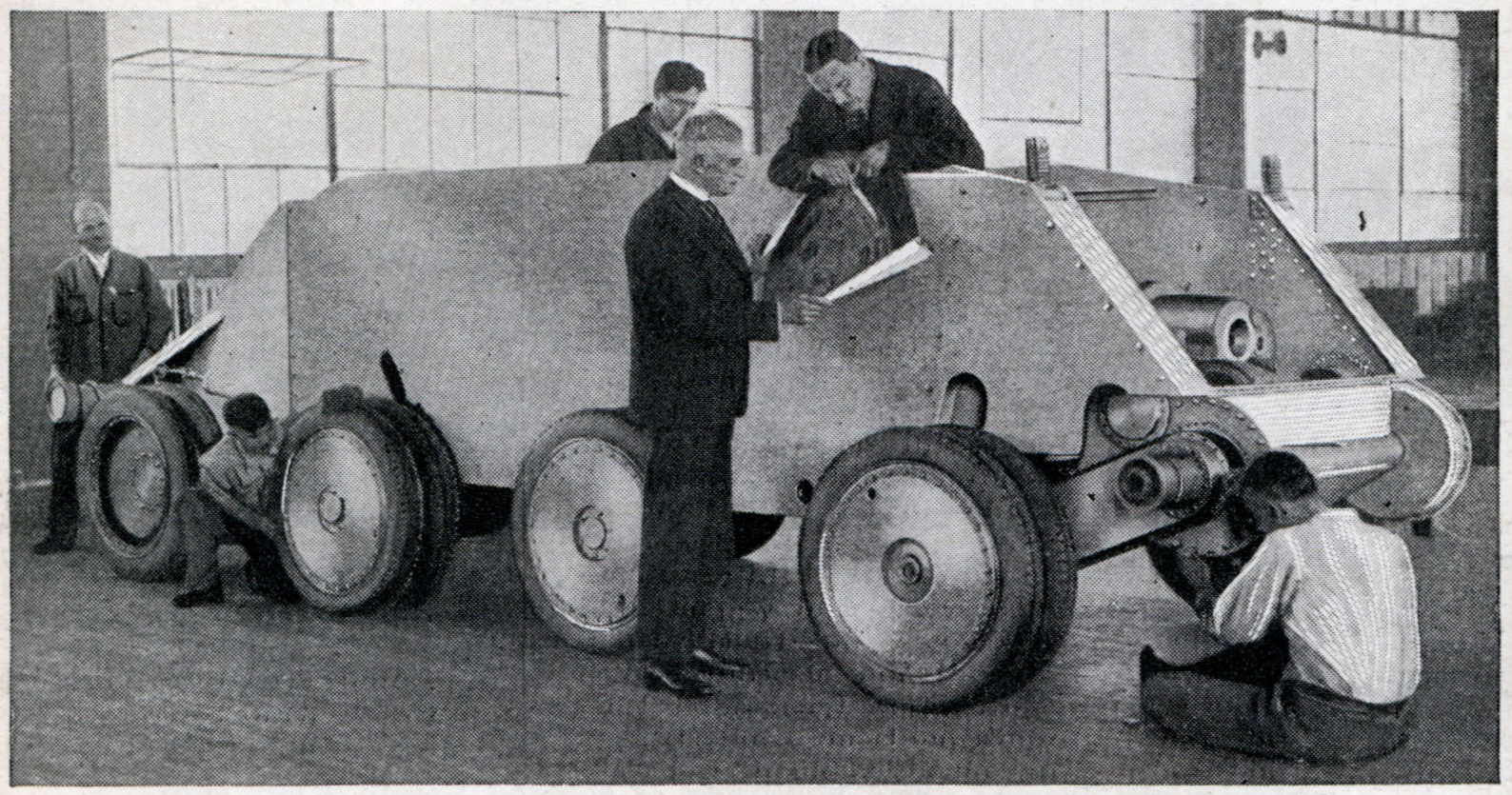

Now the first reaction from the mech pussies must be dispelled. They will bitch and whine that Christie's tank was "too light and didn't have enough protection" yadda yadda yadda. NO TANK is ever protected enough for a coward. Secondly, these cowards do not understand WARFARE--which is about winning battles and not personal survival concerns over tank dueling. The Christie M1932 tank was an OFFENSIVE cavalry weapon that would fly to get into positions of advantage to destroy the enemy's rear areas holding together their force cohesion or to take key terrain so the MAIN BODY in heavier tanks can pass. The mech pussies have no concept of a cavalry that has to be lighter than the main body in order to serve it by moving ahead of it to make first contact with the terrain and human enemies to develop the situation according to our initiative. Because the mech pussies have weak egos they want everyone to be mediocre like them in a main body borg someone superior to them in any way hurts their feelings. Hence, we have no cavalry in all-volunteer, adult-less, U.S. Army because it has no bureaucracy let alone professionals to fight for its equipment and mission.
Regardless, the Christie M1932 had a 75mm gun STUG-style in its front hull making for a very low silhouette would not have needed heavy armor plate and would have been devastatingly effective at blasting both ground pillboxes as well as enemy tanks. M1932s would have air-landed by SURPRISE (another concept the mech pussies that want to stampede hundreds and thousands of tanks at a time do not understand or accept) and shot up vulnerable enemy areas. Think Donald Sutherland's tanks shooting up the German rail station in Kelly's Heroes. The M1932 at 80 mph on tracks and up to 100 mph on its wheels on the ground would have had far superior mobility to anything the enemy would have.
The next BS criticism is against the Christie BT wheel-track tanks that preceded the tracked-only T34. The mech pussies with an anti-light tank, anti-cavalry agenda whine that when Germany invaded Russia in 1941 their light tanks over-whelmed the Russian's. Well no shit, Sherlock. What do you expect when you have to fight on the DEFENSIVE with OFFENSIVE tanks? The whole point was that Russia was getting ready to invade Germany and Hitler had no choice but to strike first, which caught the offensively-equipped Red Army at a disadvantage. There is your explanation contradicting the mech pussy agenda. Russian tanks had to get heavier because they were on the DEFENSIVE. However, to their credit they didn't go too heavy because they knew eventually they'd have to march on Berlin--so the T34 was kept under 40 tons. Christie partially vindicated.
The time has come for Christie to be fully vindicated. If you want to fly a medium tank, you can. Knock yourself out. Its simply a matter of mathematics. You can even make heavy tanks fly, but the following is about how to create an air-mech cavalry to support the main body--not make the main body fly. Once you get above 50 tons with a heavy tank, the wing area needed to fly becomes immense; over 100 feet--which makes for a big target and a costly to operate machine--but it is doable; the Mi-26 Halo heavy lift helicopter offers us undeniable daily proof just short of heavy tank lifting. Ralph Zumbro and Bill Schneck have long proposed we get a Very Heavy Lift Helicopter (VHLH) to carry M1 Abrams heavy tanks and end once-and-for-all the excuses the mech pussies have for not flying.
We don't have to wait 10 years and $10B later for a VHLH or Joint Heavy Lift Helicopter (JHL--or whatever it's being called this year) to be developed...we already have the world's greatest light tank, ever--the M113 Gavin which stands on its own as the ideal cross-country mobile, amphibious tracked vehicle that can be fitted with all sorts of armors and armaments to make it scout ahead and infantry transport for 3D air-mech maneuvers. Once on the ground high-technology "Super Gavins" can prevail with 80 mph speeds, hybrid-electric drive, band-tracked stealth and land mine, RPG, ATGM and even tank main gun protection. For simplicity we will refer to M113s as "Gavins" in honor of LTG Gavin who created them while Chief of Army R &D. All we have to do is make Gavins fly as outlined to us by Walter Christie.
Meet the AeroGavin!
Artist's conception by Dr. Paul Czysz
To make the Gavin fly, we will use bi-plane wings as outlined by legendary aerospace engineer Dr. Paul Czysz to get double-the-lift without having to have large wing spans. This brings up another attitude problem by the do-nothings that the AeroGavins "wouldn't fly fast enough". At 150+ mph they'd be much faster than ANY vehicle on the ground, call 1-800-OBVIOUS. An asshole even wrote a book mocking the Christie M1932 with the sophistry that German fighters would somehow shoot them down any more easily than C-47s flying at roughly the same speeds. He's an asshole with a prejudice against the doers with good ideas because he's a snotty do-nothing that thinks he can make himself look smart at his better's expense. The problem is he's fucking completely wrong. Ever hear of fighter protection? The same fighter protection needed for C-47 transport planes to fly would be available for a flying tank unit to move. Today, it could even be provided in-house, by Army OH-58D Kiowa Warrior, AH-6 Little Bird, AH-60 Blackhawks, and AH-64 Apache attack helicopters who themselves move around the battlespace on their own because if the USAF DOES ITS JOB THEY SHOULDN'T HAVE TO CONTEND WITH MIGS and more than Christie M1932 flying tanks would have to worry about Mesherschmitts and Focke-Wolfes after 1944. And of course, the AeroGavins could be ARMED with air-to-air missiles so if any MIG bounces them he might end up a flaming wreck.
I'm not finished. A word about bi-planes.
During WW2 the British made good use of bi-plane fighters like the Gloster Gladiator and transports like the Valetta where their short take-off and landing (STOL) capabilities offered by the two wings offset the reduced speed in flight from the increased aerodynamic drag. A plane that can land and take-off and then fly slow beats one that can't land at all. This double-lift enabled long flight times such that British biplane fighters were able to "hover" over German Luftwaffe air bases and "goal tend" shooting down "superior" and "more modern" fighters as they tried to land or take-off. They were even British aces in WW2 that flew biplane fighters.
Page 68:
"...two Gladiators from [RAF] Habbaniya, loitering around Rashid Airfield at Baghdad, encountered two Bf.110Cs attempting to take-off, and destroyed them both, much to the joy of the two british sergeant pilots responsible. Thus within two days of arrival and despite the attack on Habbaniyah on 16 May, Junck's force had been whittled down to four He.111 bombers, eight Bf.110C fighters and two JU-52 transport aircraft, a loss of 30 percent. This rate of attrition did not augur well for the continuance of a strong Luftwaffe presence in Iraq. With few replacements available, no spares, poor quality fuel and aggressive attacks by the RAF out of Habbaniya, the mathematics of attrition went in only one direction, and the eventual withdrawal of the Luftwaffe in these circumstances became inevitable."
In fact, even the cash-strapped British realized bi-plane wings were good for take-offs and fuel carriage and considered a disposable set of wings on top of a Hawker Hurricane, which makes a lot more sense to carry extra fuel compared to drop tanks that only give you drag and produce no lift. Its still a great idea, the parasite wings/mother aircraft concept.
We are not suggesting shedding any of the AeroGavin's bi-plane wings in flight, just that this prejudice against the biplane that its somehow "old fashioned" when it is what it is--and nothing more--is unwarranted. The Russian AN-2 Colt biplane transport still serves successfully around the world and its fabric-covered structure makes it radar-invisible, at a fraction of the cost of our multiple billion-dollar efforts. Who is laughing now?
With lightweight turbine engines, we depart slightly from the elegant Christie efficiency to make the tank engines do double-duty and just use the Gavin's JP-8 fuel to power the Aero unit's propfans. By having the Gavin hybrid-electric drive, we shed the weight of a heavy diesel piston engine anyway, so adding a turbine engine with the Aero unit is still not a net gain in weight over current Gavins.
By having the AeroGavin tank crews fly themselves they will not have to "mother may I?" anyone else to do it and thus, commanders would have an operational-maneuver range AirMech Cavalry responsive instantly to battlefield needs and opportunities. We are not suggesting the AeroGavins fly themselves strategic distances from the continental U.S. to the Middle East. This would be done by air and/or sealift. Once in the area of operations however, AeroGavins would fly themselves into and possibly--out-of-battle. I said "possibly" because where they land will be cluttered and may not facilitate flying out, which like what WW2 gliders found themselves in which is AOK. The AeroGavins without their "Aero" flying gear are Gavins that can drive themselves back to base or keep on pressing the enemy overland. The Aero gear can be recovered back to a forward operating base (FOB) for re-use when desired. If you can't fly out, drive out--this opens all sorts of places where to land and fight--not available if the planes have to be able to take-off.
Another whine will be about the AeroGavin's "vulnerability to air defense weapons in flight". What do you think happens to transport planes that deliver ground forces? Moreover, they have to be exposed TWICE; once to insert the force and then on the way back to base. In contrast, the AeroGavin force only has to fly in ONCE, achieving surprise. In flight, what better to be protected against enemy fire than inside an actual tank? After insertion and shedding their Aero units, the Gavins fight on with infantry-tank action; there will be no transport planes flying back to base to pick off or worse follow to locate the entire air base for retaliatory destruction.
AeroGavin Tactics, Techniques and Procedures (TTP)
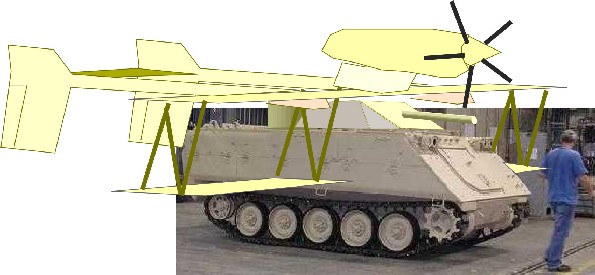

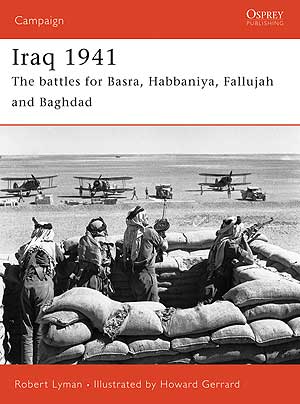
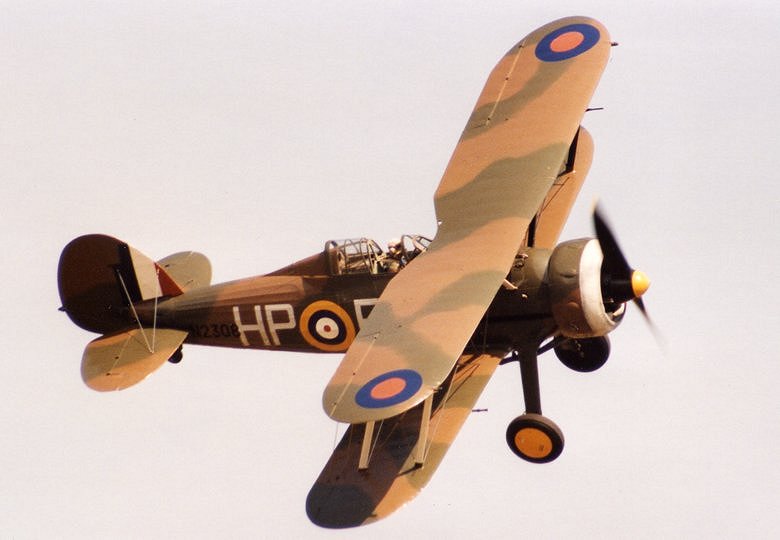
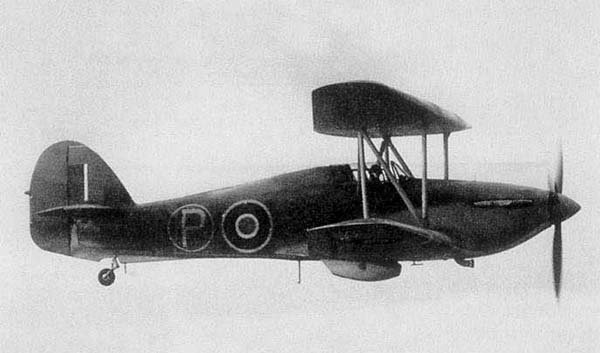
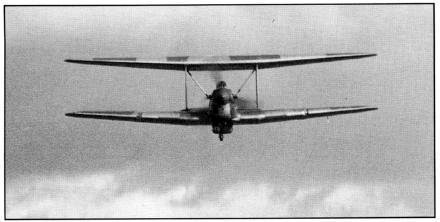
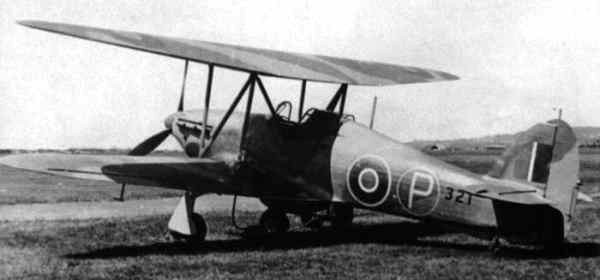
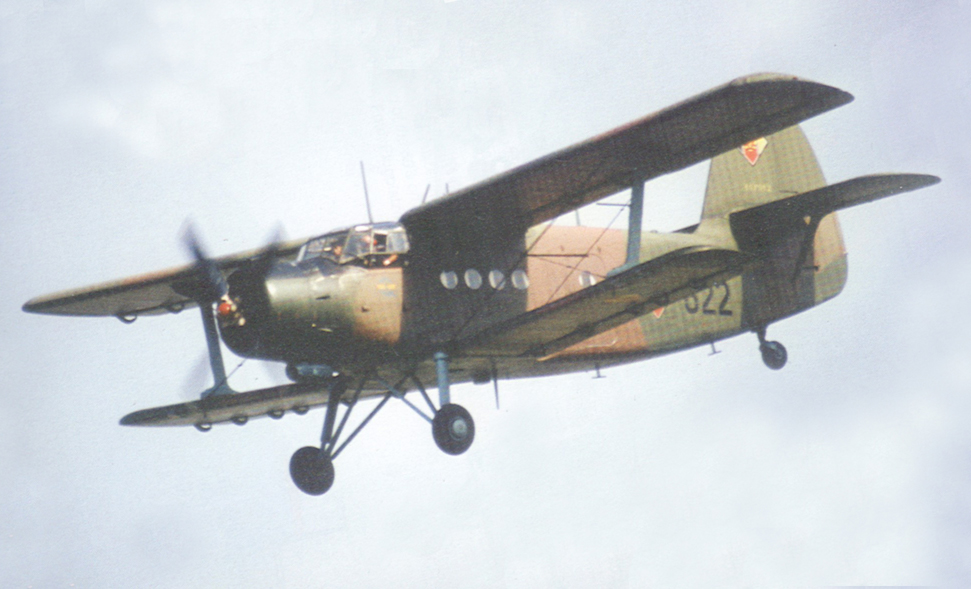
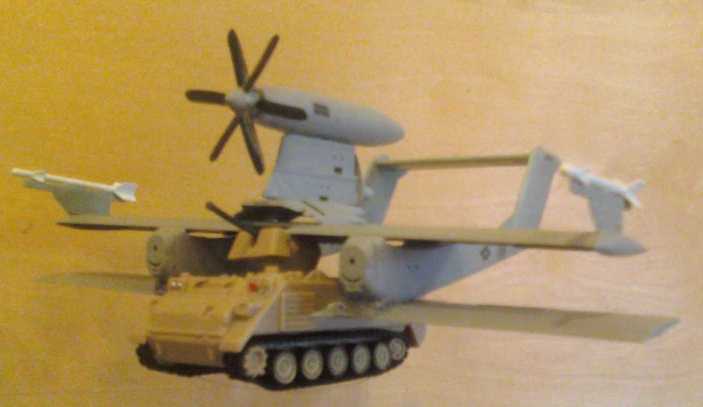
In a nation-state war, the opening move of the Army might be to land an AeroGavin Force deep behind enemy lines to block the escape of fleeing leaders or perhaps to knock-out enemy air defenses in advance of a major Airborne drop. An AeroGavin force might be enough to take-down the headquarters of an Army or the palace of a dictator. In sub-national conflict, AeroGavin forces could operate continuously in the field--not giving rebel groups a chance to rest and regroup while flying over and moving cross-country, negating their predictable road land mine tactics.
The AeroGavin force whatever its size would normally take off from a FOB with a smooth runway, then form up into formation for low-altitude terrain masking flight to the insertion point (IP). Depending upon the accuracy and certainty of our planning and guidance means, as the IP approaches, paratroopers inside the lead AeroGavins would open the rear ramp door (possibly the entire rear ramp) and prepare to jump out to parachute in and secure the assault landing zone (LZ). Thus, those in AeroGavin units would have to be exceedingly brave to fly inside and conduct daring missions and would take turns parachuting in ahead of landings. Every Delta Weapons company in an Airborne infantry battalion would have AeroGavins to fly on a case-by-case basis HHC, A, B or C company Paratroopers inside. When not transporting infantry, they function as Air and Ground cavalry.
The parachute-inserted advance force would mark and control the AeroGavins to land one-at-a-time. I suggest they be Pathfinder and JTAC school-qualified making them "Attack Pathfinders" who can mark and control not only DZs/LZs but direct close-air support (CAS) fires. Once on the ground, using their tracks to move around, the Aero units would be shed and collected together for recovery later if desired. If the mission were high-risk and extremely important, the Aero units could even be destroyed as the Gavin Force moved out. If the mission were to capture key personnel or rescue Americans the Aero units would be guarded so the Gavin Force can return to them, re-attach and fly off.
Dispersed Warfare to Avoid PGM Destruction Demands Tanks that Fly
The day of the comfortable base and large, bloated surface ship are over--we just don't know it yet. We have yet to have our "Waterloo" (battlefield defeat that forces us to admit our approach to war is wrong). Air forces need to disperse their aircraft and deploy them from camouflaged, underground mobile battle boxes. Exactly what is done to mobile surface-to-surface ballistic missiles that take-off vertically and don't need runways--needs to be applied to aircraft that do. Navies that want to have any chance at all of protecting surface cargo container and oil tanker ships will need to disperse seaplanes across many, many surface ships in order to smother all attacks or go under the sea with submarine aircraft carriers. Likewise, the Army must disperse it men into BATTLEBOXes that are underground and well-camouflaged and provide every small group its own tracked light tank--that can fly itself wherever we need ground maneuver force and not expect a huge USAF transport plane loaded with thousands of gallons of fuel to show up to fly us anywhere. Imagine if the Germans had accurized and produced thousands of V-2s and began lobbing them at our airfields and troop assembly ports in England on June 4-5, 1944. There might not have even been a D-Day. The day of accurate SSMs is here. We must anticipate this problem and take corrective action NOW before we have our strategic defeat.
We need tanks that fly.

Watch James Bond, agent 007 use AeroGavins to defeat the Rockefeller Illuminati in "Masquerade: Everything is Not What it Appears":